With 75% of CEOs predicting that AI will significantly change their business in the next three years[1], what does the talent marketplace look like? Who are the biggest employers, what are the skills and roles being hired, where is the talent based and how difficult is it to hire?
We assembled a global sample of more than 800,000 senior professionals specialising in Artificial Intelligence and Machine Learning. These individuals hold leadership positions (Head of, VP, Director, and above) across all functions and industries worldwide[2].
The USA has more senior AI talent than UK, Germany, India and Canada combined
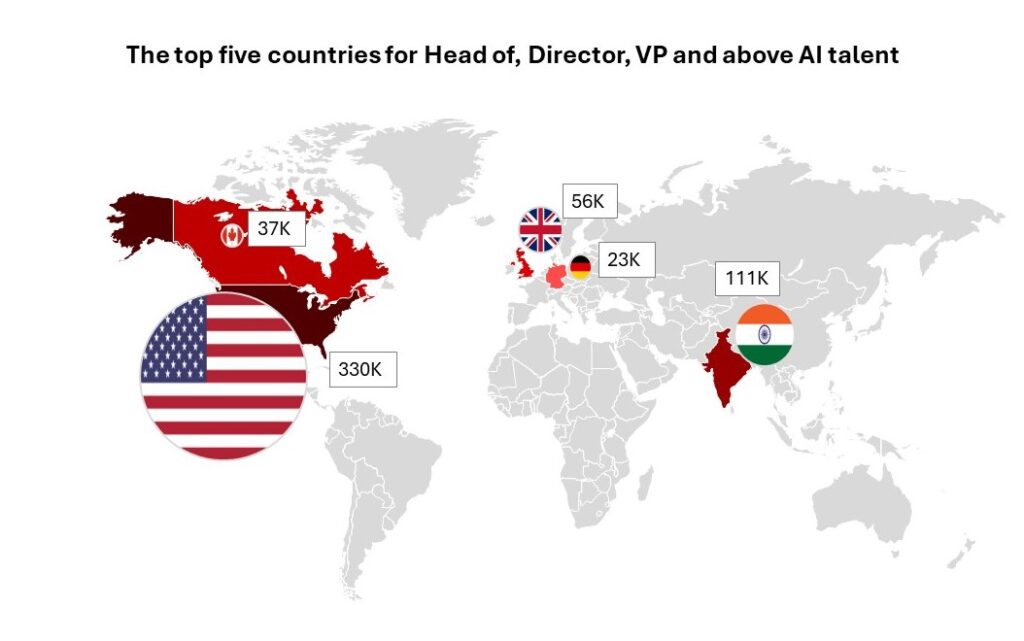
US-based companies dominate the list of top talent sources due to the concentration of large technology businesses headquartered there. The San Francisco Bay area alone has more AI talent than the whole of the UK. Hiring demand in the US is very high. Of the alternative locations, India is the standout choice with over 100,000 senior AI professionals. Bengaluru is a potential hidden gem location; it has more senior AI professionals than Germany and relatively low competition.
Most AI Talent is working on building and selling
There is a diverse range of roles and skills in the AI Talent pool detailed below. The largest proportion (40%) is concerned with building AI technology (software development, broader IT/technology and product management). Nearly a third is working in relation to commercialisation (business development, marketing and sales). Much smaller numbers work across a broad mix of operating, educating and advising.
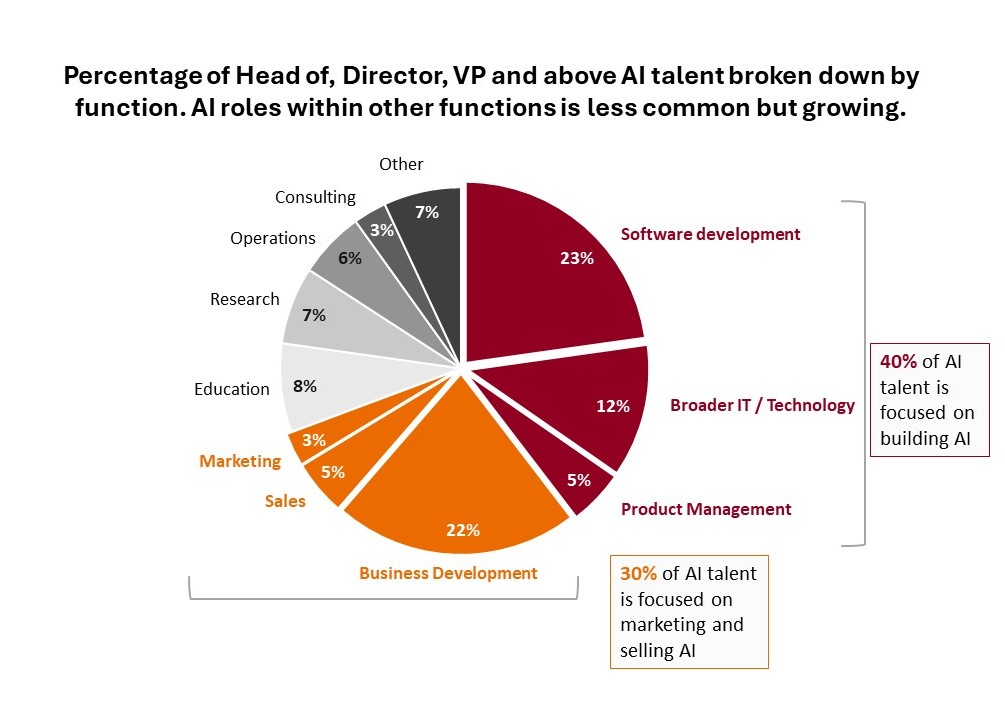
Mckinsey’s 2022 state of AI report is consistent with this finding. It showed that the major adopters of AI were in the technology making and sales functions. The report highlighted customer acquisition, customer service analytics as well as product development and feature optimisation. It also found that the marketing, sales and product development functions were most likely to see revenue increases following the adoption of AI.
More demand for building than selling: AI engineers are four times as sought after as AI business developers
While there are similar numbers of engineering and business development professionals the difference in demand for these positions is significant. For engineering and IT/technology professionals there are 7 job listings for every person working in the field, whereas in business development there are 1.3 listings per person.
For companies needing to build strength in AI, competition is fierce and likely to increase when we consider that the number of people with the title Head of Artificial Intelligence and Director of Artificial Intelligence grew by 23% and 21% respectively in just the last 12 months.
Technology and consulting companies have built the biggest AI teams so far
With the exception of JPMorgan Chase & Co, the top 10 employers of this talent are all technology and consulting companies, with Microsoft, Google and Amazon occupying the top three spots. Other names on the list are IBM, Accenture, Oracle, Deloitte and Meta.
The same story can be found when we look at the industry distribution of senior AI professionals. Software Development accounts for 19% whilst IT Services and IT Consulting follows closely with 15%.
Attrition rate is an important consideration for employers of AI talent. The top 10 AI employers all are losing talent to some extent. Meta is losing the most of this group with 31% attrition, and Oracle the least at 12%.
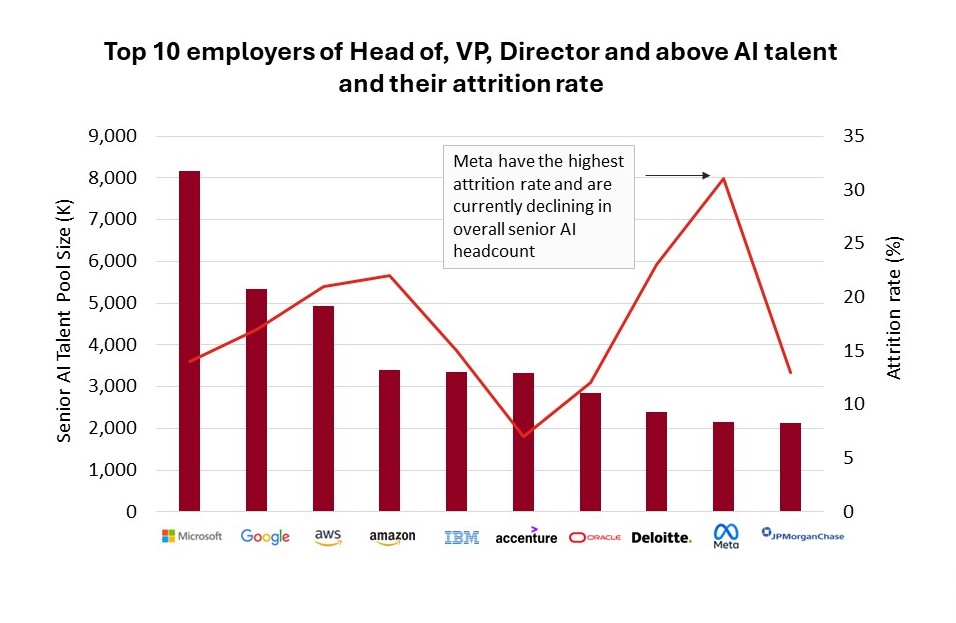
The global senior AI talent pool is small but moving frequently
We analysed the proportion of talent who had moved roles in the last 12 months and who were currently open to opportunities across AI, blockchain, cloud and cyber, all of which we know to have high demand.
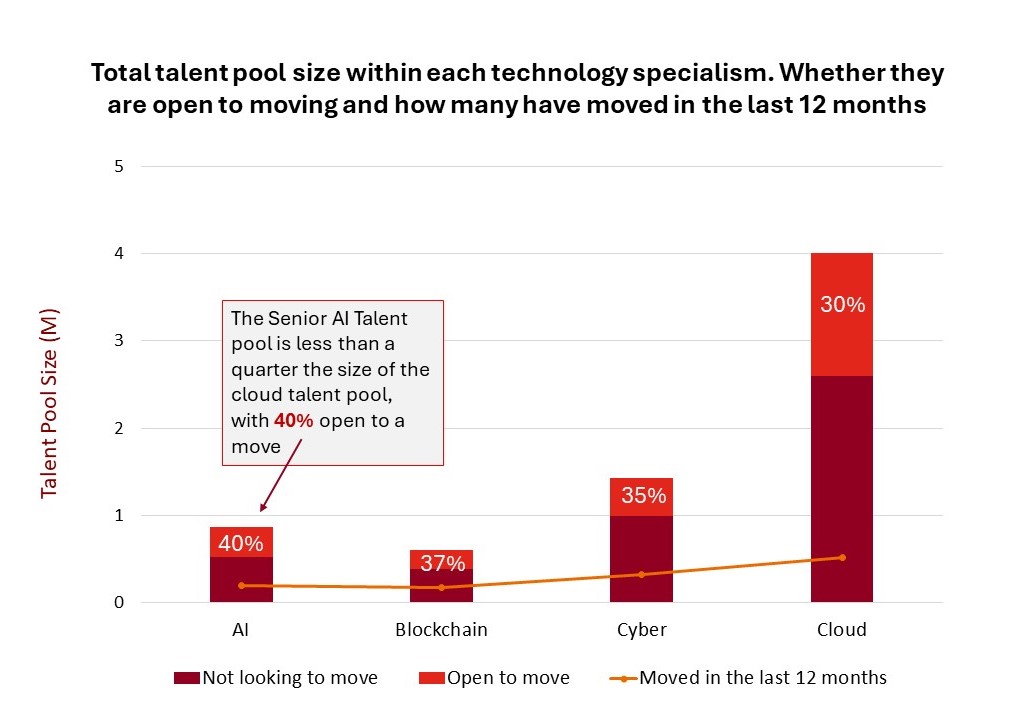
AI has the highest proportion open to move jobs at 40%. Cloud is relatively stable with 30% open to opportunities. The proportion who have actually moved in the last 12 months is highest in blockchain (29%) and lowest in cloud (13%).
The high numbers of AI talent open to move reflects candidates’ confidence in their ability to command higher salaries and more interesting projects through switching roles. Retention and development of high potential talent is even more important in these high growth competitive areas.
Senior AI talent is moving more frequently than any other function
When comparing tenures of senior AI talent to other senior functional roles, AI candidates move the most frequently, around twice as much as those in senior finance, operations, and commercial roles.
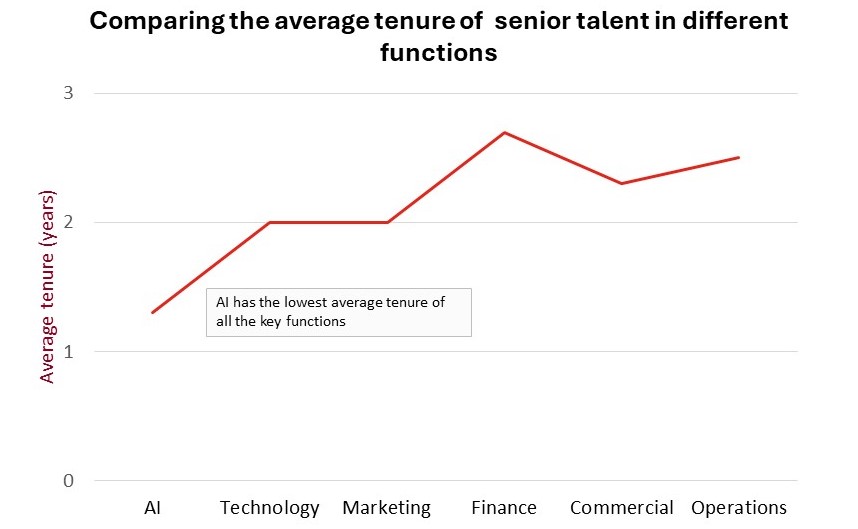
This means that, while AI candidates may be relatively easy to engage, hiring and retaining may prove more challenging.
We find traditionally that in high-demand roles, where tenure is low, rapid wage inflation has become a major driver in candidate motivation. Attracting candidates can therefore become compensation driven and developing strategic retention initiatives are essential. Programmes around EVP, L&D and talent management become increasingly important.
The AI talent snowball effect
We took a closer look at the proportion of senior AI talent relative to overall senior headcount in technology, financial services and manufacturing. Unsurprisingly, technology companies are spearheading the drive for AI talent with AWS and Microsoft having 15% and 13% respectively of their senior headcount with expertise in AI or Machine Learning. In Financial Services, Capital One stands out as having a relatively high proportion of AI related talent at over 5% with most competitors in financial services and manufacturing companies having between 2-4% of their senior workforce devoted to AI.
Organisations that invest heavily in AI and have high proportions of senior talent with AI/ machine learning expertise find it easier to retain talent. When looking at the top 10 employers of senior AI talent, average tenure within these businesses is 3.4 years, compared to just 1.3 years for the broader talent pool. Given the ‘cutting edge’ nature of the AI/ML specialism, companies that are innovating, investing and have senior sponsorship for this capability, find it easiest to retain their workforce.
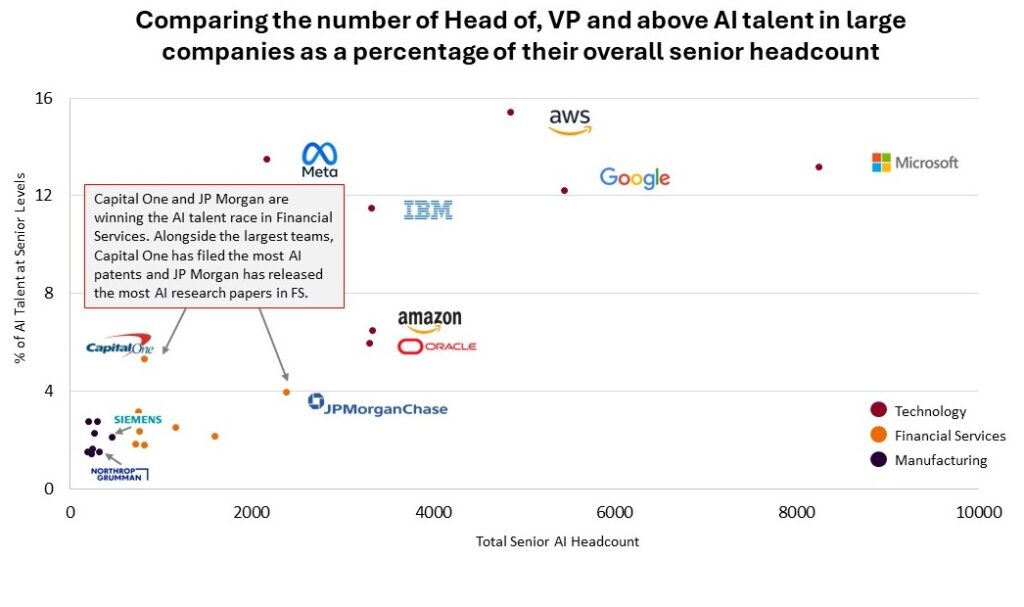
Senior AI talent is less diverse than any other function
Less than a quarter of all senior AI talent is female. This is the lowest proportion of all the functions.
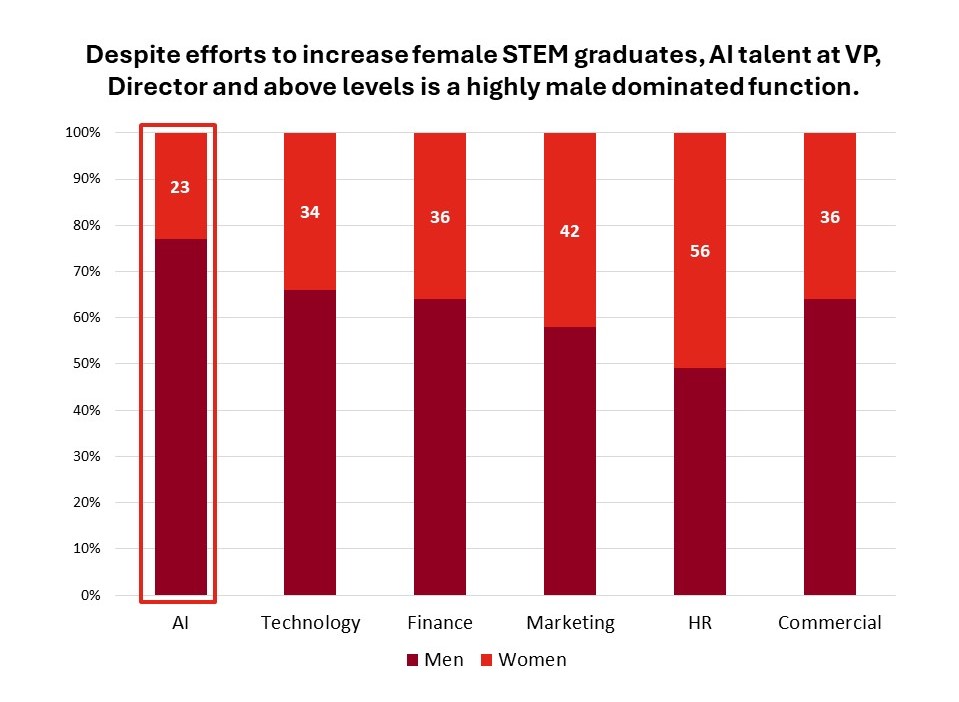
The problem is not only confined to senior levels of AI talent. While gender diversity is slightly higher amongst those with less than 10 years’ experience (30%), above 10 years’ only a quarter are women, and the figures are even lower at more senior levels.
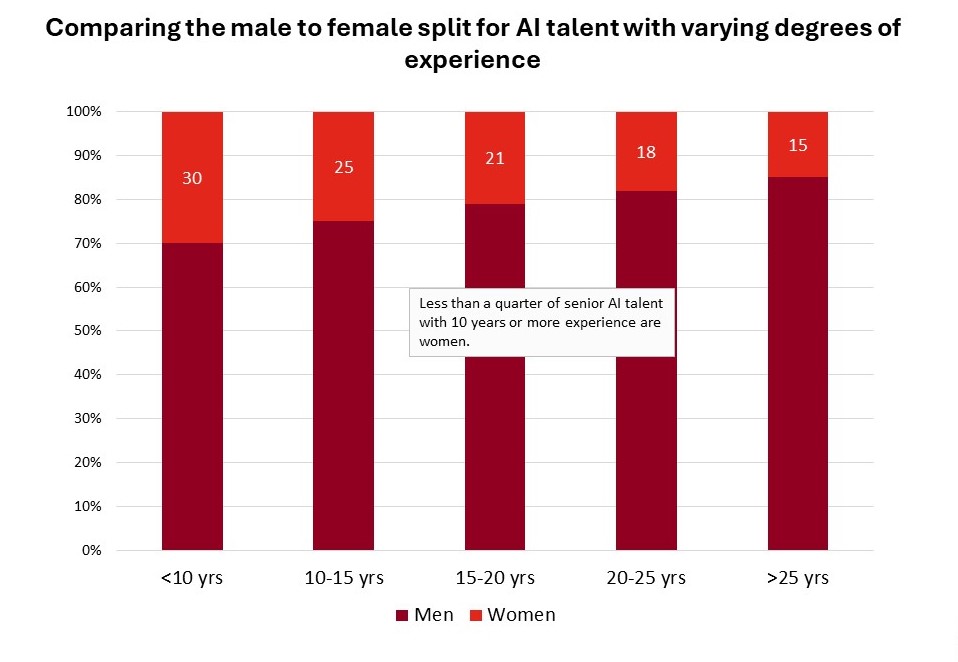
It would appear that AI-related disciplines are, in general, not attracting women. Companies with AI ambitions should consider how their employer brand is supporting the acquisition of diverse talent, and what must be done to retain them.
[1] https://www.reuters.com/business/ceos-fear-their-firms-pre-davos-survey-ai-climate-risks-rise-2024-01-15/
[2] Savannah Group examined directors, chiefs, VPs, vice presidents, senior vice presidents, presidents or ‘head of’ working in any function with capability in Machine Learning, ML, Deep Learning, Neural Network, Natural Language Processing, NLP, Computer Vision, Supervised & Unsupervised Learning, Big Data, Computer Vision, Cognitive Computing OR “language model”




